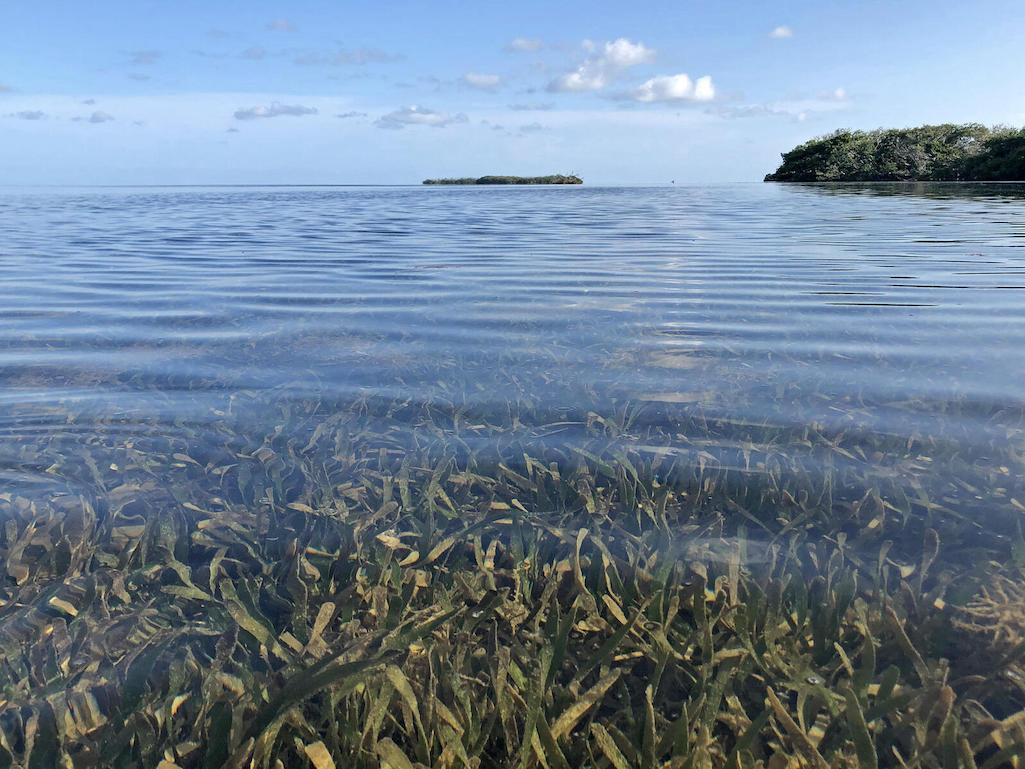
Florida Bay seagrass/Audubon Florida, Kelly Cox
Editor's note: The following article was written by the staff at Audubon Florida and is reposted with their permission.
This week, the world gasped when South Florida’s coastal water temperatures reached the upper 90s °F, shattering records and shocking locals and visitors alike. The Audubon team at the Everglades Science Center has recorded water temperatures in Taylor Slough, part of Everglades National Park, for more than 30 years. The team saw temperatures climb to 96.7 °F on July 12—one of the highest recordings ever taken by Audubon in Florida.
Long-term monitoring data is worth its weight in gold in situations like this. As temperature readings spike, Audubon researchers not only compare the heat with decades of prior data, but also capture emerging trends as a changing climate drives a new normal for South Florida.
“These temperature records tell us that climate change is here, and that we need Everglades restoration now more than ever,” says Kelly Cox, Audubon’s director of Everglades policy. “Delays in this year’s rainy season in South Florida have exacerbated this problem, reducing circulation in nearshore waters. With the return of the rains, we are optimistic that freshwater inputs and increased circulation in the system will help lower these extraordinary temperatures. Everglades restoration ensures that connections exist to let water that falls as rain higher in the watershed gets to Florida Bay where it is so urgently needed.”
Audubon’s Everglades Science Center team also monitors seagrasses in the area where the high water temperatures are recorded, and reports good news: So far, seagrasses are not experiencing die-offs. Seagrass acts as essential nursery habitat for a variety of species, including fish, turtles, and dolphins. Florida’s iconic wading birds depend on fish and other prey that live within seagrass beds.
“Everglades restoration projects already underway have improved water flow into Florida Bay, and as a result we’ve seen healthier, lower salinity levels this summer,” says Jerry Lorenz, PhD, State director of research. “That means the seagrass can better withstand extreme events like this.”
In fact, Audubon led the way in collecting salinity data in the early 1990s—one of the first in the region—and has collected hourly records for water depth, temperature, and salinity going back to 2001 throughout the entire southern Everglades.
Hot water temperatures are more than uncomfortable—they can be dangerous. Extended hot water temperatures could eventually cause a seagrass die off. Additionally, heat creates conditions for deadly algal blooms, which thrive in warm water containing high levels of nutrients from agricultural and stormwater runoff. Moreover, the temperatures themselves can kill fish and other wildlife, while furthering the bleaching events that threaten to decimate the Florida Keys’ remaining coral reefs. Audubon’s research team is keeping an eye out for fish kills and other mortality events as a result of the heat wave.
“You can’t go back in time and start monitoring when you have a question,” explains Dr. Lorenz. “That’s why long-term monitoring datasets like ours are so valuable. We know this heat wave is unprecedented because we have more than 30 years of data that show us. These heat records mean we need to speed up our work to combat climate change and restore the Everglades to make South Florida more resilient in the face of future heat events.”
As a changing climate drives more extreme events, continued local, state, and federal investments in long-term monitoring remain critically important.



Add comment